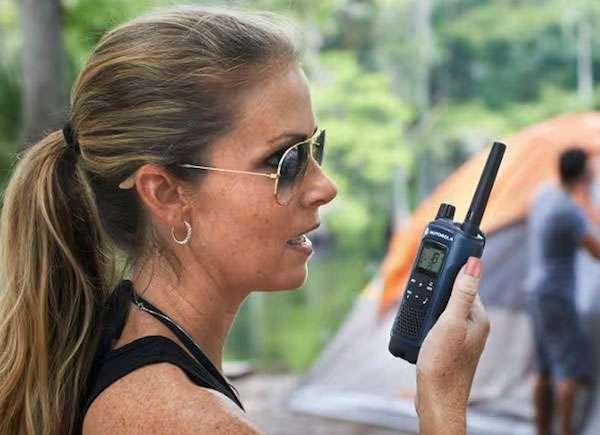Walkie-talkies are handheld, portable, two-way radios that allow people to communicate with each other over a short distance. They are commonly used by police, security, military, and emergency personnel, as well as by hobbyists, campers, hikers, and adventurers. But how far can a walkie-talkie actually go? What factors affect the range and quality of the communication?

The theoretical maximum range of a walkie-talkie
The theoretical maximum range of a walkie-talkie is determined by the power output, the frequency, and the antenna of the device. The power output is measured in watts, and it indicates how strong the radio signal is. The higher the power output, the farther the signal can travel. However, most walkie-talkies have a low power output of 0.5 to 5 watts, which limits their range to a few kilometers.
The frequency is measured in hertz, and it indicates how many cycles the radio wave completes in one second. The higher the frequency, the shorter the wavelength, and the more information the radio wave can carry. However, higher frequencies also tend to be more easily absorbed or reflected by obstacles, such as buildings, trees, hills, and mountains. Most walkie-talkies use either very high frequency (VHF) or ultra high frequency (UHF) bands, which range from 30 to 300 MHz and 300 to 3000 MHz, respectively.
The antenna is the part of the walkie-talkie that transmits and receives the radio signal. The length, shape, and orientation of the antenna affect the range and quality of the communication. Generally, the longer and more vertical the antenna, the better the performance. However, most walkie-talkies have short and flexible antennas, which are more convenient and durable, but less efficient.
The theoretical maximum range of a walkie-talkie can be calculated by using the following formula:
`range (km) = 3.57 * sqrt(h1) + 3.57 * sqrt(h2)`
where `h1` and `h2` are the heights of the antennas (in meters) above the ground level. This formula assumes that there are no obstacles or interference between the walkie-talkies, and that the earth is perfectly spherical and smooth. However, this is rarely the case in reality.
The practical maximum range of a walkie-talkie
The practical maximum range of a walkie-talkie is influenced by many factors, such as the terrain, the weather, the interference, and the quality of the device. These factors can reduce the range and quality of the communication significantly, sometimes to less than 10% of the theoretical maximum range.
The terrain is the physical features of the land, such as hills, valleys, mountains, forests, buildings, and water bodies. These features can block, reflect, refract, or scatter the radio signal, causing attenuation, distortion, or interference. Generally, the flatter and more open the terrain, the better the range and quality of the communication. However, some terrains can also enhance the signal, such as water bodies, which can act as reflectors, or mountains, which can act as repeaters.
The weather is the atmospheric conditions, such as temperature, humidity, pressure, wind, rain, snow, fog, and clouds. These conditions can affect the propagation and reception of the radio signal, causing fading, noise, or distortion. Generally, the colder and drier the weather, the better the range and quality of the communication. However, some weather conditions can also improve the signal, such as temperature inversion, which can create a duct that guides the signal over long distances.
The interference is the unwanted signals or noises that interfere with the desired signal, such as other radio devices, electrical appliances, power lines, or natural phenomena. These sources can cause jamming, distortion, or interference. Generally, the lower the frequency and the higher the power output, the more resistant the signal is to interference. However, some interference sources can also be avoided or minimized, such as by changing the channel, the location, or the time of the communication.
The quality of the device is the technical specifications and the condition of the walkie-talkie, such as the battery, the speaker, the microphone, the circuit, and the buttons. These components can affect the performance and the reliability of the device, causing distortion, noise, or malfunction. Generally, the newer and more expensive the device, the better the range and quality of the communication. However, some devices can also be maintained or improved, such as by replacing the battery, the antenna, or the parts.
The practical maximum range of a walkie-talkie can vary greatly depending on the factors mentioned above, and it is difficult to estimate accurately. However, some walkie-talkies have a range indicator, which shows the signal strength and the quality of the communication. This can help the user to adjust the settings or the position of the device, to achieve the best possible range and quality of the communication.
Walkie-talkies are useful devices that allow people to communicate with each other over a short distance. However, the range and quality of the communication are limited by many factors, such as the power output, the frequency, the antenna, the terrain, the weather, the interference, and the quality of the device. The theoretical maximum range of a walkie-talkie can be calculated by using a formula, but the practical maximum range of a walkie-talkie can vary greatly depending on the situation. Therefore, the user should be aware of these factors, and try to optimize the settings and the position of the device, to achieve the best possible range and quality of the communication.
